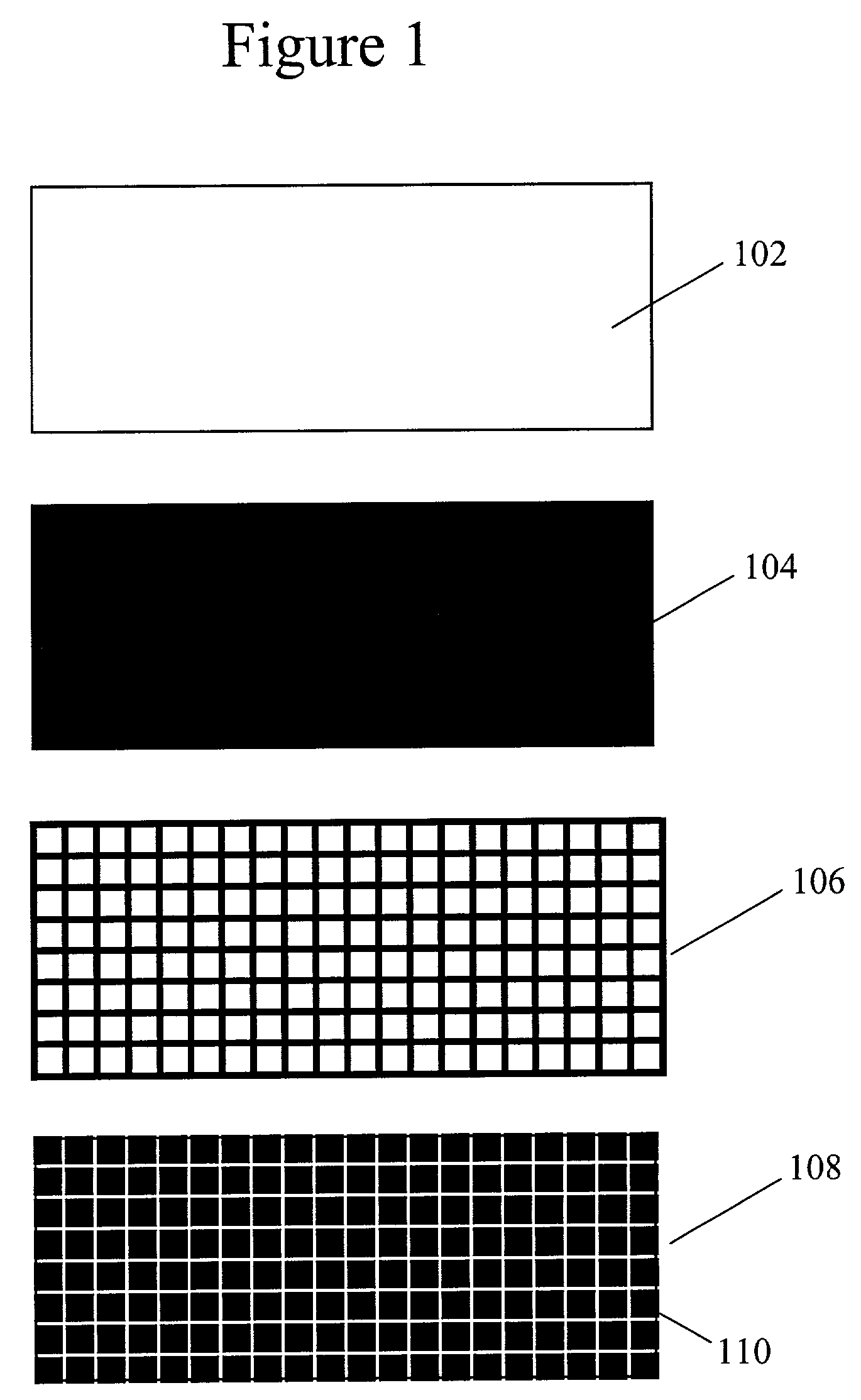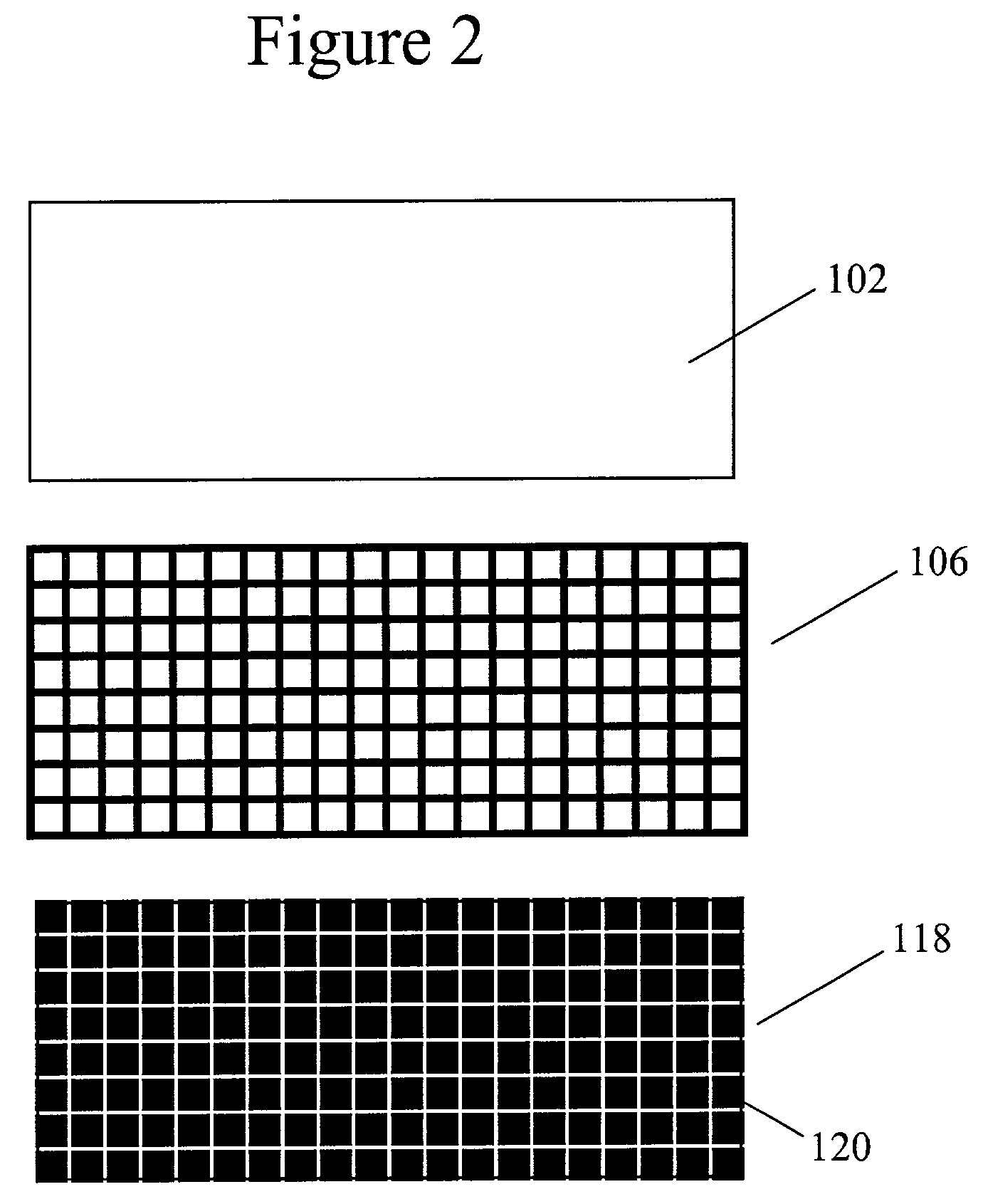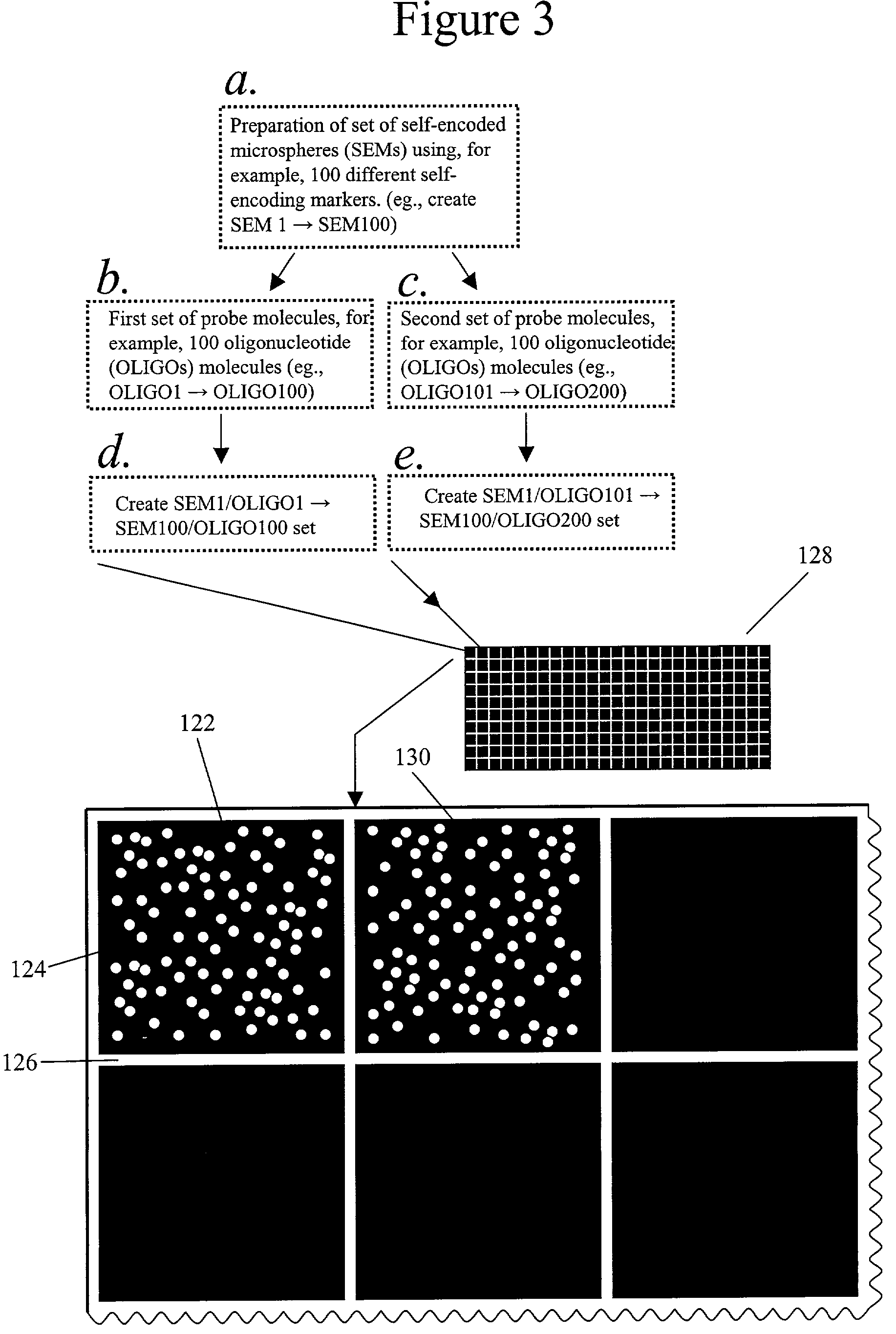Randomly ordered arrays and methods of making and using
a random order and array technology, applied in the field of arrays, can solve the problems of laborious and variable multiple fabrication steps that are commonly required, and achieve the effect of reducing the number of fabrication steps
- Summary
- Abstract
- Description
- Claims
- Application Information
AI Technical Summary
Problems solved by technology
Method used
Image
Examples
example 1
[0139]Polypropylene and silanated glass slides (1×3 in.×1 mm) were used in the preparation of substrates in array fabrication. Glass microscope slides were obtained from Erie Scientific, Portsmith, N.H. (catalog # 2950-W). These soda lime glass microscope slides were silane treated by dipping in a mixture of 1% v / v p-tolyldimethylchlorosilane (T-Silane) and 1% v / v n-decyldimethylchlorosilane (D-Silane, United Chemical Technologies, Bristol, Pa.), each in acetone, for 1 minute. After air drying, the slides were cured in an oven at 120° C. for one hour. The slides were then washed with acetone followed by dipping in deionized water. The slides were further dried in an oven for 5–10 minutes. Polypropylene slides were obtained from Cadillac Plastics (Minneapolis, Minn.).
[0140]The silanated glass or polypropylene slides were then washed in acetone or isopropanol. The washed slides were then dip-coated in a 1 mg / ml solution of photo-Polystyrene (pPS) in toluene. pPS was prepared by pulver...
example 2
[0143]An array was formed by immobilizing microparticles on the substrate in the presence of a crosslinking agent, where the microparticles affinity bound the substrate and were coupled together by the presence of a crosslinking agent. pPS-coated slides, as prepared in Example 1, and streptavidin- and fluorophore-coated microparticles, as described in Example 1, were used in this example.
[0144]Amine-reactive N-hydroxysuccinimide (NHS) ester cross-linking reagent, disuccinimidyl suberate (DSS; Cat.#21555; Pierce Chemical, Rockford, Ill.) stock solution was prepared by dissolving DSS in dimethylformamide (DMF) at a concentration of 10 mg / mL. DSS stock solution was then diluted in PBS to a concentrations of 0.05, 0.025, 0.25, and 0.38 mg / mL DSS.
[0145]The PBS / DSS solution was then added to the washed microparticle suspension (as described in Example 1) and the microparticles had a concentration of 1 mg / ml in the final solution. The final concentration of DMF was kept below 5%, to avoid ...
example 3
[0148]An array was formed by immobilizing microparticles on the substrate by first providing a monolayer of microparticles on the substrate and then providing a subsequent layer of microparticles that became crosslinked in the presence of a crosslinking agent. pPS-coated slides, as prepared in Example 1, and streptavidin- and fluorophore-coated microparticles, as described in Example 1, were used in this example. The DSS crosslinking agent, as prepared in Example 2, was used in this example.
[0149]Microparticles coated with streptavidin were applied to the substrate and incubated to allow the streptavidin to non-covalently affinity bind to the biotin provided on the substrate. This coating provides a monolayer of streptavidin-coated microparticles. The coated substrate was washed to remove unbound microparticles. Thereafter, a solution containing microparticles was applied as a slurry to the substrate containing a monolayer of streptavidin coated microparticles.
[0150]The substrate an...
PUM
 Login to view more
Login to view more Abstract
Description
Claims
Application Information
 Login to view more
Login to view more - R&D Engineer
- R&D Manager
- IP Professional
- Industry Leading Data Capabilities
- Powerful AI technology
- Patent DNA Extraction
Browse by: Latest US Patents, China's latest patents, Technical Efficacy Thesaurus, Application Domain, Technology Topic.
© 2024 PatSnap. All rights reserved.Legal|Privacy policy|Modern Slavery Act Transparency Statement|Sitemap



